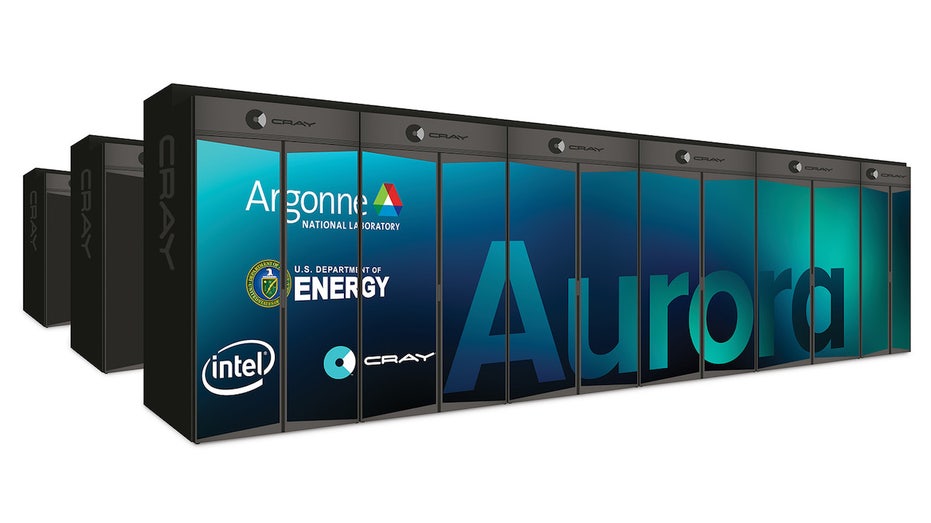Department of Energy, Hewlett Packard Enterprises unveil Polaris supercomputer
Polaris is powered with chips developed by NVIDIA Corporation and Advanced Micro Devices
Nissan exec: Chip shortage is ‘short-term phenomenon’
Nissan COO Ashwani Gupta on the global chip shortage, supply and demand in the auto industry, his company’s production and the new Nissan Z.
A delay in the delivery of Intel Corporation's exascale supercomputer to the U.S. Department of Energy's Argonne National Laboratory has created a new opportunity for chipmaker rivals NVIDIA Corporation and Advanced Micro Devices (AMD).
On Wednesday, Argonne unveiled Polaris, a testbed supercomputer made up of 280 of Hewlett Packard Enterprise's Apollo Gen10 Plus systems and powered by 2,240 of NVIDIA's A100 Tensor Core graphics processing units and 560 of AMD's second- and third-generation EPYC processors.
Polaris is expected to deliver approximately 44 petaflops of peak double precision performance and almost 1.4 exaflops of theoretical artificial intelligence performance, up to four times faster performance than Argonne’s current supercomputers. (A single exaflop is equal to one "quintillion" calculations per second, or 1,000 petaflops. A single petaflop is equal to one "quadrillion" calculations per second.)

Installation of the Polaris supercomputer system at the Argonne Leadership Computing Facility in August 2021. Polaris provides researchers with a powerful new tool to prepare for science in the exascale era, when computers will perform a billion bill (Argonne National Laboratory)
The machine will enable scientists and developers to test and optimize software codes and applications that will be used by Intel's $500 million Aurora supercomputer for a range of scientific projects, from advancing cancer treatments and the nation’s energy security to expanding the boundaries of physics with particle collision research.
"Polaris is well equipped to help move the [Argonne Leadership Computing Facility] into the exascale era of computational science by accelerating the application of AI capabilities to the growing data and simulation demands of our users," ALCF director Michael Papka said in a statement.
Polaris, which was delivered and installed in August, will go into use starting in early 2022 before opening to the broader high performance computing community in the spring of 2022.
GET FOX BUSINESS ON THE GO BY CLICKING HERE
A spokesperson for Argonne National Laboratory confirmed to FOX Business that the Aurora system will be faster than Polaris, providing greater than 1 exaFLOP of double precision peak performance. Aurora was originally supposed to be delivered in 2021, but has been delayed for several months.

The Aurora system's exaFLOP of performance — equal to a "quintillion" floating point computations per second — combined with an ability to handle both traditional high-performance computing and artificial intelligence will give researchers an unprece (Argonne National Laboratory)
The delay is being caused by Intel's Sapphire Rapids core processing units and Ponte Vecchio graphics processing units, key components of the Aurora system. An Intel spokesperson confirmed to FOX Business that Aurora remains on track for delivery next year, with the chips expected to go into production in 2022.
CLICK HERE TO READ MORE ON FOX BUSINESS
The struggle for Intel and opportunity for NVIDIA and AMD comes as the three tech giants are battling it out for dominance in the data center chip market.
In addition to Polaris, AMD will help power the National Nuclear Security Administration's $600 million El Capitan supercomputer, which is set to be delivered to Lawrence Livermore National Laboratory in early 2023. El Capitan is expected to be the world's fastest exascale computer, producing record-breaking speed of 2 exaflops, 10 times faster than the current most powerful supercomputer.
Meanwhile, NVIDIA is currently powering Oakridge National Laboratory's Summit supercomputer, developed in collaboration with IBM, which can produce 200 petaflops, or 200,000 trillion calculations per second.
| Ticker | Security | Last | Change | Change % |
|---|---|---|---|---|
| INTC | INTEL CORP. | 35.04 | -0.64 | -1.79% |
| AMD | ADVANCED MICRO DEVICES INC. | 155.08 | +1.06 | +0.69% |
| NVDA | NVIDIA CORP. | 846.71 | +6.36 | +0.76% |
According to Technavio, a global technology research and advisory company, the data-center chip market has the potential to grow by $18.77 billion between 2021 and 2025.
